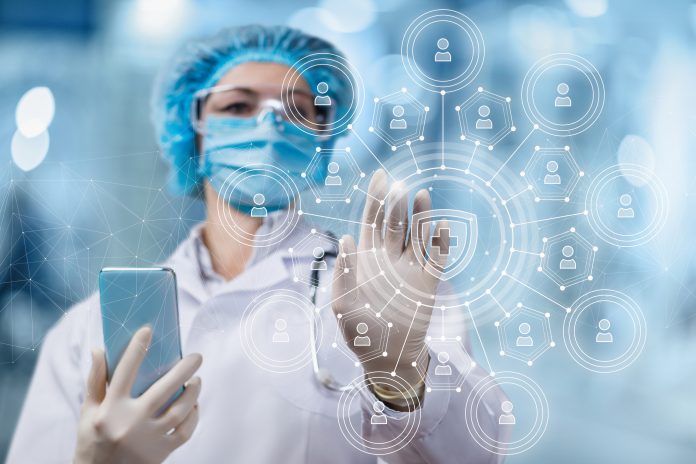Bernard Ross, CEO of Sky Medical Technology, looks at how wearable medical technology can address some of the most critical medical issues of the 21st Century
A key trend of the 21st Century will be providing effective healthcare to an ageing global population. Everybody wants to live a longer and more fulfilled life, but it does not come without a cost.
Global healthcare systems are being challenged in three distinct but related ways: first, an ageing population means more people need treatment; second, as science develops, so do positive medical outcomes, but not without additional budgetary demands; finally, more people retired leaves relatively fewer people in work to fund medical care. During the next decades, healthcare will need to reshape significantly to address these issues.
The MedTech boom
Central to delivering the healthcare system of the future are a new breed of medical technology companies that offer cost-effective treatments allowing people to live longer and better lives. The medical device industry is predicted to be worth more than $8.5 billion by 2025 – with bioelectronic medicine being one of the fastest-growing areas of healthcare. Bioelectronics uses painless electrical pulses to help manage and cure medical issues and has long been used in medicine: from applications in pacemakers to the treatment of epilepsy and Parkinson’s. Now bioelectronic therapies are addressing a range of other applications – most notably circulatory issues such as venous thromboembolism (VTE).
Addressing VTE risk and blood clots
Every 37 seconds someone in the western world dies from a VTE – otherwise known as a blood clot. VTE’s can cause serious medical issues from deep vein thrombosis (DVT) – where blood clots form, typically in the legs – to pulmonary embolism (PE) – a blood clot on the lung.
One of the key causes of VTE is immobility, so it is perhaps not surprising that up to 60% of all cases occur during or following hospitalisation – when people’s movement is restricted. Some 40,000 deaths in England every year are caused by VTEs in hospitalised patients, yet 62% of these deaths are preventable given proper management.
Traditionally, hospitals address the risk of blood clots in one of two ways: through blood-thinning medicines that prevent clotting or via Intermittent Pneumatic Compression (IPC) devices. IPCs are inflatable sleeves worn on a patient’s leg that push blood out of the legs back to the heart. However, research shows that not all patients can be prescribed IPC or find it intolerable, leaving many patients without a treatment to reduce the risk of a VTE.
Wearable bioelectronic technology is now being used to address this precise issue in several hospitals. A ground-breaking example is an innovative medical device that is applied at the knee in a similar way to a sticking plaster, that sends small and painless electrical pulses down the lower leg every second, pushing blood in the deep veins back to the heart. Its mechanism of calf muscle contraction increases blood circulation to around 60% of what would be achieved walking, without raising a patient’s resting heart rate or blood pressure. While these devices are relevant for all patients, they offer the first solution for those unable to be prescribed drugs or IPC.
A collaborative approach to healing
Bringing new medical devices to market is rightly challenging. Any medicine must first not harm patients. To gain clinical approval for use, it is also essential to demonstrate the device’s impact on positive patient outcomes. Critical to adoption is winning the support of medical professionals. MedTech companies do this by seeking early adopters of new medical innovation that are prepared to trial new solutions. These pioneers, often working on new medical applications in addition to their usual hectic working schedule, are unsung heroes of healthcare systems – helping to pave the way for positive new medicines to be adopted.
MedTech companies may believe that a clinically proven device, driving better patient outcomes is ripe for adoption, but there are other important considerations on the route to clinical approval. Other issues including how easily a medical technology can be deployed into existing supply chains or how quickly staff can be trained to administer devices are equally important to driving successful deployment. The ultimate challenge is demonstrating value – not just in positive clinical outcomes, but also in financial savings – be it from lower cost adoption, reducing the time patients spend in hospital or even reducing the risk of readmission.
The next generation of healthcare networks
Delivering global, compelling, yet cost-effective healthcare will be one of the key challenges of the 21st century – one the technology industry is uniquely placed to address. MedTech that enables people to live longer and more active lives, without bankrupting global healthcare systems, can help change the shape of the future of healthcare. Achieving this relies not just on creating proven technology solutions that drive demonstrably better patient outcomes but ensuring they are also simple to adopt into healthcare services globally.
NHS tech in 2020 and beyond
In our April 2021 edition of this publication, Ben Davison, NHS Digital’s Executive Director for Product Development, explained how the coronavirus pandemic prompts a surge in the number of people using NHS tech in 2020. “Digital services provided by the NHS saw a huge increase in usage throughout 2020 as a result of social distancing and the need to access healthcare remotely,” Ben revealed. (1)
More recently, we have learned that NHS Digital’s Coronavirus In Your Area dashboard permits users to check coronavirus cases within one to ten miles of their address, plus statistics for positive cases from the previous ten weeks. Over 65,000 searches made using this app on 4th January 2021 and this website continued to receive over 70,000 views weekly. Alistair Bullward from NHS Digital said: “We believe in improving lives through data and technology, and our Coronavirus In Your Area app empowers people to understand the risk from coronavirus where they live.” (2)
The NHS App plays a crucial role in the COVID-19 response, in that it gives people an easy and secure way to “access a range of NHS services on their smartphone or tablet – from ordering repeat prescriptions to booking and cancelling GP appointments,” Ben Davison explains. (1) Since 17th May 2021, of course, the NHS app has been available to use as a vaccine passport for those who have had both doses of the COVID-19 jab. (3)
References
(1) https://www.openaccessgovernment.org/covid-19-surge-in-the-use-of-nhs-tech-in-2020/103937/
(2) https://digital.nhs.uk/news-and-events/3-million-views-for-covid-in-your-area-app
(3) https://www.bbc.co.uk/news/technology-57070185











